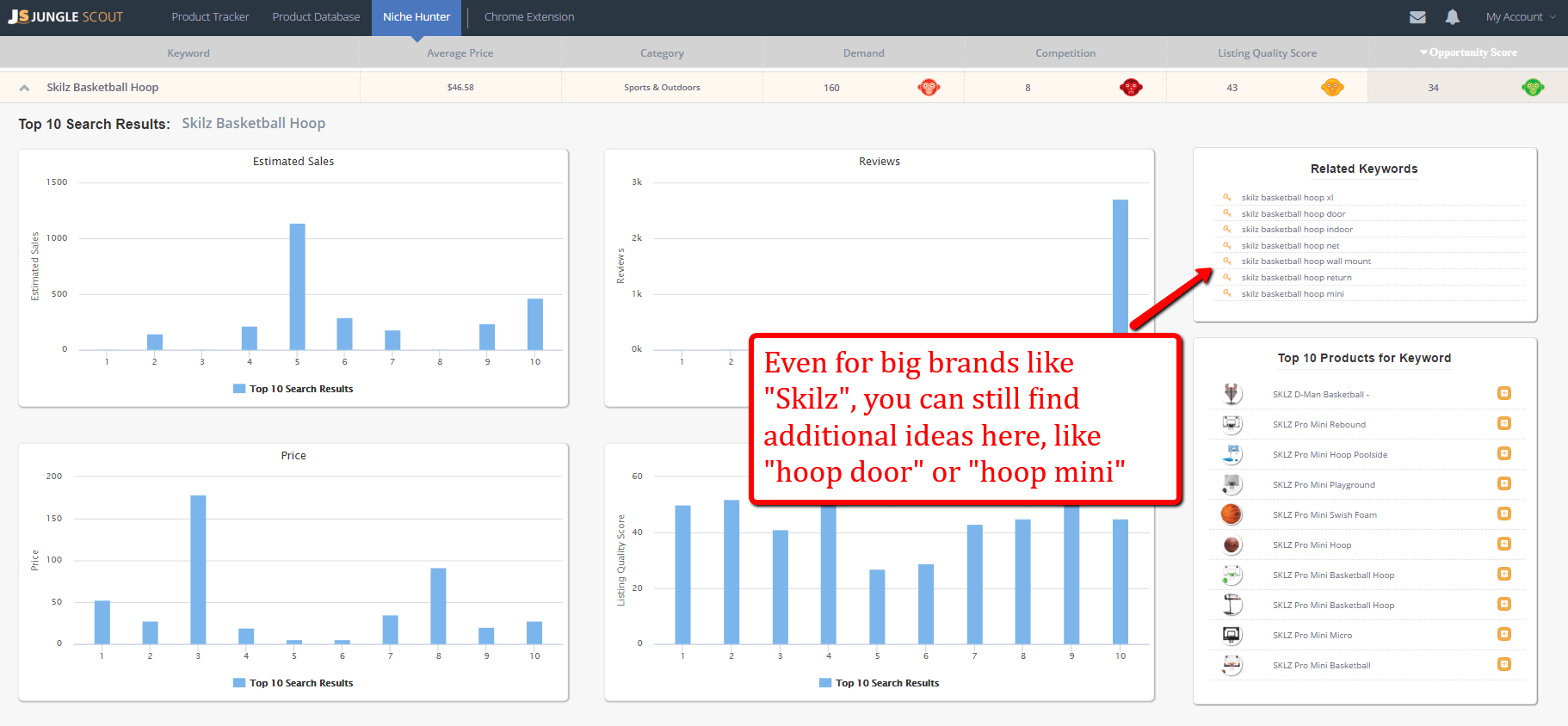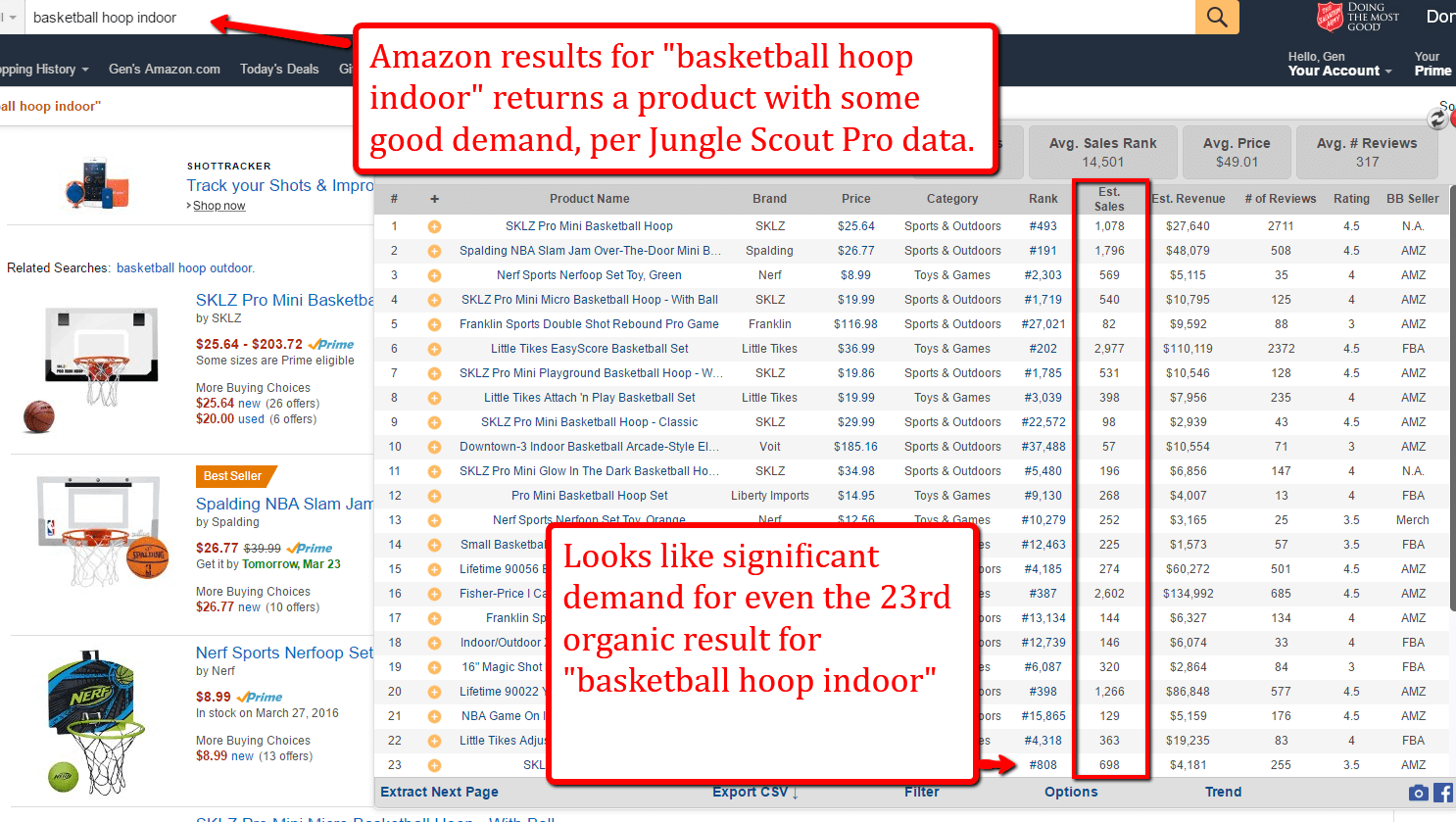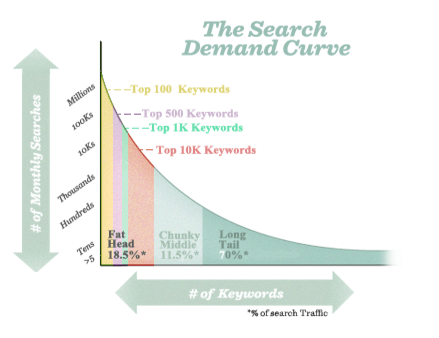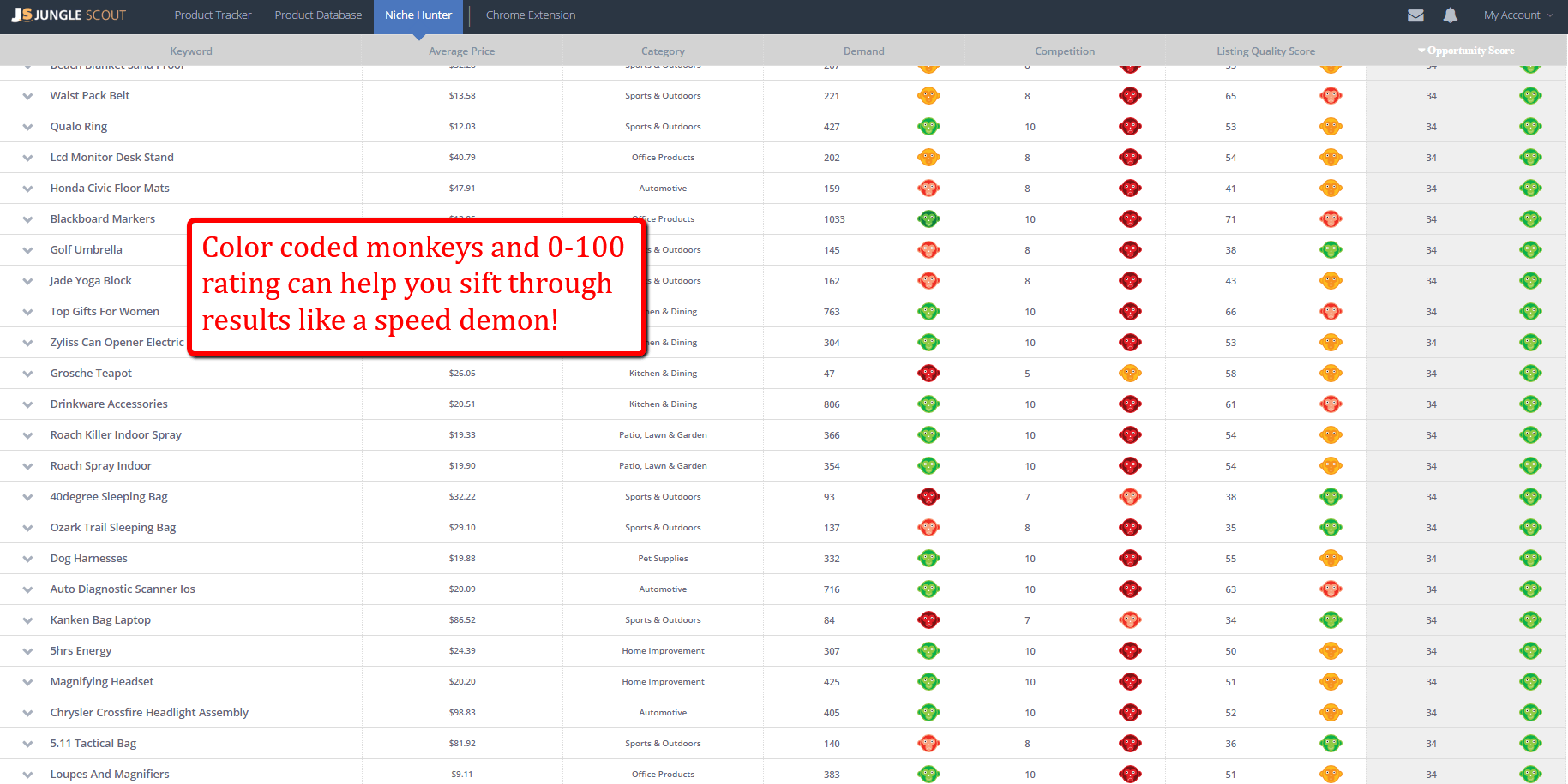Blog: Want To Find Profitable Niches on Amazon? This Is How I Do It
Want To Find Profitable Niches on Amazon? This Is How I Do It
What Amazon seller wouldn't want an easier way to find profitable products? Everyone, I assume! So I was so excited to get your feedback on the product, and it has been really enthusiastic and positive, which is awesome, but I realize that there are also a few outstanding questions. How does it work? Am I using it correctly? What strategies can you recommend? I apologize if there is any confusion, but if you've been knee deep in Niche Hunter-land for months on end like I have, you also may start assuming that everyone knows the ins-and-outs of Niche Hunter as well!
In this post, I want to address some common questions, and share some of my approaches in using the tool. To start, here is a short video to explain the product feature for those who are not familiar with what it can do:
Why does Niche Hunter return brand names on items? How am I supposed to compete against big brands?
Brand name competition is okay! In fact for the Niche Hunter, I have made it a “best practice” of mine to click through on the details even if it is a big brand. The reason for this is that the Niche Hunter will show the Related Keywords and the Top 10 products for that keyword. And that’s where the golden nuggets may be. For example, here is an example for a big sports training brand called Skilz, and their basketball hoop:
You can see that there are “Related Keywords” in the top right, where there are keywords that are related to Skilz (and start with the “Skilz”), but have non-brand terms included. This is where there may be some good opportunities to uncover niches. For example, I see that one of the top Related Keywords” is “Skilz basketball hoop indoor”. It sounds like something that may have potential, so I pull it up in the Amazon store and look at the Jungle Scout Pro data to dig into the niche further:
So at a high level, this is how I can uncover high-potential niches from brand names: find the long-tail keyword and descriptors that are related to the brand name, and then dig deeper into what that product is other products and sellers in the niche.
What is a long tail keyword and why is it relevant?
A “long tail keyword” is basically a keyword that is longer than 3 or 4 words. It is defined by being highly descriptive, detailed, and longer. The opposite of a long tail keyword, is, yep, a “short tail keyword” or a “head term”. This is just a short general word that could bring up a ton of potential answers in the search engine. Moz put together this helpful graph to help you understand how a majority a the search queries will be a “Long Tail” or “Chunky Middle”:
Say for example you are shopping on Amazon for audio speakers. The head term would be “speakers”, and if you typed that into the Amazon search, you would get a bunch of varied answers that would be Amazon’s best guess of what you are searching for. Chances are that you won’t find what you are looking for. However, if you were very specific, and typed in a long tail version, or a more descriptive search like “portable waterproof bluetooth speakers” you would get a much more relevant set of results.
Why is this important? Because as Amazon sellers, we want to identify the products that have significant demand and limited competition. If you are able to hone in on very specific long tail search terms, and create a product listing that includes those keywords, you increase your likelihood of ranking highly for those search terms.
Furthermore, the more detailed the search query, the more purchase-oriented the user is. Someone who is looking for “speakers” may be in the research or discovery phase, and may not be ready to buy the product immediately. However, once they include the specific details of a long tail search, you can assume that they are further along in their journey to a final purchase. This is good for us as Amazon sellers, exactly when we want our product to appear in their search!
Position your private label product to appear for long tail searches & conversion rate! Click To Tweet Why does Niche Hunter not return the same thing as when I key that keyword into Amazon? The results are way less.
This is true, that the Niche Hunter will not return the exact same results as if you typed in the keyword into Amazon. Due to the size of Amazon's catalog, we are choosing the top keywords for Niche Hunter and continue to add more every day.
As of today, we have over 1 million keywords in Niche Hunter and are adding a few hundred thousand each week based on popularity of searches. You will see the Niche Hunter library increase over time, so keep checking back for new and different ideas!
Do I have to have all green monkeys?
No, you definitely do not need a line of green monkeys in order to find a good product opportunity! For those that have not used the Niche Hunter yet, we have created a color-coded and numerical guide to help you sift through the results with speed and efficiency. This is what your results look like with different monkeys:
This is my solution to help you identify more product ideas with greater speed. You don’t need all green monkeys in order to find a winning product—everyone’s criteria of a good product is different, so I can’t recommend a one-size fits all answer. However, even if you see some red monkeys in the results, it may still be worthwhile to click through. The key is that you start generating new ideas, clicking around, and follow the trail of keywords until you uncover the right niche and product idea for you!
How do I know that the keyword that the Niche Hunter supplies is the keyword that actually produced their sales? And is that important for me to replicate what they are doing?
Honestly there is no way for you to identify exactly which keyword is the revenue generating keyword for a given product. Niche Hunter is a building block to help you generate ideas. The only way to tell which keyword is the best on each product is to actually be the seller.
However, if you take a look at any well-optimized keyword listing, you should be able to reverse engineer what keyword the seller is targeting. For example, taking this well-optimized listing that I came across in Niche Hunter, which keyword do you think the seller is trying to rank for:
I would guess “microfiber glove” and “car wash mitt”, mainly because it is the first keyword in the listing, and repeated in several places throughout the listing. I think that it is always good to place the main keywords at the front of the listing. By the way, if you have a car, you should get one of these…..it will help you always keep your shine on, I’m sold on this product!
How do I use Niche Hunter with the other Jungle Scout products? How do I leverage the results I find in NH to help me find a product to sell or private label?
Niche Hunter is a great tool for your private labeling toolkit. You can use the Jungle Scout Extension to help you gather data from a specific page on Amazon. This is great for really digging into a product category or niche, doing competitive analysis, and “spying on competitors” to see what else other sellers are finding success with.
The Web App helps users come up with product ideas using the Product Database, after creating a set of filters like demand, competition, net margins, etc. The user can then track those products over time for actual Amazon data gathered to verify whether the product is something that they want to pursue further.
Lastly, the Niche Hunter takes a different approach and looks at keywords instead of specifically products. The Niche Hunter is almost a shotgun approach, where you can hit a bunch of potential products at once. Niche Hunter really rounds out your private label product research toolkit and gives you a way to look at potential products from all angles.
If you were running a search in NH, what are the steps you would take, from start to finish?
I think that the best approach to starting a search in Niche Hunter is to start with a broad set of criteria, and continually narrow down until you find a manageable set of criteria to scan through, which may be a few hundred to a few thousand, depending on how carefully you want to explore each result.
When creating the user interface of Niche Hunter, I really wanted to make it as simple and intuitive as possible. There are so many different filters that could have been included, but I think that we have narrowed it down to the most important metrics to you as a seller, which includes: Category, Demand, Price, Competition, Listing Quality Score, Opportunity Score, Word Count, and Search Keyword. Each of these is important and can help you quickly refine the results to be a manageable number.
One helpful thing is to include the maximum 100 results per page. Because I like to move through my product research with speed (based on doing hours of this in the past!), it speeds up the process by having as many results as possible. Speed and execution is the name of the game with Amazon product research, so every bit helps!
My formula for selling on Amazon: speed + execution = success Click To Tweet
And that is why I created Niche Hunter and so excited about how it can help Amazon sellers: it maximizes speed, efficiency, and execution in a way that is so simple that one could theoretically launch dozens of products in a year once the process is streamlined. Niche Hunter is only available for Web App Standard ($69 per month) and Web App Business ($99 per month) members. If you have any questions, definitely reach out to us at support@junglescout.com.





